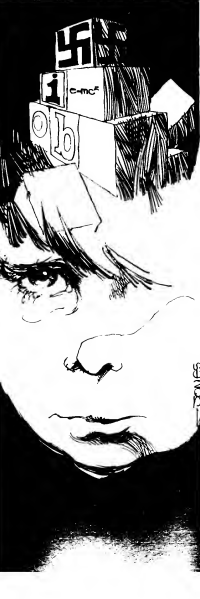
A school for young wizards: What could possibly go wrong!
I wanted to like last year's City of Illusions, but the book fell flat. However, I saw the potential in Ursula K. Le Guin as a writer. Her ideas in the book were good, it was the execution that was lacking, so with her latest book out, A Wizard of Earthsea,I figured I’d give her another try.
A Wizard of Earthsea by Ursula Le Guin

Ged is an ambitious young wizard with a hunger for knowledge and power. The book follows his journey from childhood into adulthood, first starting when he attends a school for wizards. There he learns the basics of magic, makes friends and a rival. He also unleashes a dark being that wants him dead, but thanks to magic protection around the school, he is safe for the time being.
It isn’t until Ged graduates and becomes a practicing wizard for various villages that he really learns the hard lessons of magic. Now outside the protection of school, he is pursued by the dark being, eventually forced to turn and fight it, putting his skills to the ultimate test.
Fantasy as a genre doesn’t excite me as an adult, as it is often too whimsical and too escapist, too detached from our own world. A Wizard of Earthsea managed a careful balance, with an attention to the laws of magic and how it is able to be used. Wizards can only use so much magic at a time, and overexerting oneself or attempting a spell higher than one’s skill has physical consequences, causing wounds to appear on the body. Throughout the book, we see Ged test these limits, only to end up in lengthy recovery each time. Eventually, he does go too far and ends up permanently scarring himself.
I liked the concept of true names: learning the true name of a creature, plant, object or place is the key to all spells in this world. Even people have true names that they keep secret, instead using an alias in day to day life. While Ged is the main character’s true name, and the narrative refers to him as such, in dialogue he is called “Sparrowhawk” by other characters. I loved the intimate moments of friendship when true names were exchanged, showing a great amount of trust between characters.
Ged makes a compelling main character, with his distinctive flaw being his own hubris. Time and again, he tries magic that is way above his level only to be hurt. He attempts to raise the dead, despite knowing that it can’t be done, and suffers the consequences. It's because of his hubris that a dark creature is brought into the world who specifically hunts him, creating the main conflict of the book. But we’re shown that he has other values. He isn’t greedy. When he fights the dragon, his only motivation is duty to the town he serves. When the dragon offers him some of his treasure as a reward, he declines. Most of the time when Ged overexerts his magic, it isn’t in pursuit of fame. Ged truly wants to help people, even when it’s past his capabilities.

You know it's a good book when there's a map
With this book, I finally saw what I knew Le Guin was capable of as a writer. She's always created compelling unique worlds readers want to immerse themselves in, but now her writing can back up her ideas. Maybe because this is her first foray into juvenile fiction or perhaps she is simply growing as a writer.
I look forward to what she writes next.
Four stars.

by Victoria Silverwolf
Tomorrow and Yesterday
The latest Ace Double (H-95, two quarters and a dime at your local drug store paperback rack) contains one novel looking forward in time, and one collection glancing backwards at the author's recent career.
The Man Who Saw Tomorrow, by Jeff Sutton

Cover art by Jack Gaughan.
We begin with a brilliant mathematician from California sneaking around through a remote area of Wisconsin, ready to kill a man. We cut away from this scene to find a government agent from Washington, D.C., in Los Angeles, preparing to assassinate the richest man in the world.
Why all this homicidal intent?
Flashbacks tell us what's going on. John Androki is a fellow who shows up out of nowhere. He convinces a rich guy that he can predict exactly how stocks will move up or down in the future. The millionaire sets him up with some cash in exchange for the information. Androki goes on to not only be the wealthiest person on Earth (yep, he's the intended target of the government assassin) but to wield immense political power all over the world.
Our protagonist is Bertram Kane, a brilliant mathematician (yep, he's the guy stalking a man in Wisconsin) who is working on a theory of multiple dimensions. He's a widower who's having an on-again off-again affair with Anita Weber, an art professor. His buddy is Gordon Maxon, a professor of psychology.
Maxon is convinced that Androki can perceive the future (hence the novel's title.) He calls him a downthrough, a word that's new to me. Kane isn't convinced, but when Weber dumps him for the incredibly rich and powerful Androki, he becomes suspicious.
Things get scarier when other mathematicians working on multiple dimensions are murdered. Coincidence, or is Androki arranging for their deaths? And is Kane next on the list?
You may figure out the main plot gimmick, which explains why Kane is out to kill a completely innocent man. (The government assassin's motive is less mysterious. Androki is changing America's relations with other nations in ways the United States government doesn't like.)
Basically a suspense novel with a science fiction gimmick, the plot creates a fair amount of tension, although parts of it are talky. There are quite a few murders along the way, and a pretty grim ending.
Three stars.
So Bright the Vision, by Clifford Simak

Cover art by Gray Morrow.
Four stories, dating from 1956 to 1960, by a noted author appear in this volume.

Cover art by Ed Emshwiller.
First printed in the June 1960 issue of The Magazine of Fantasy and Science Fiction, this lighthearted yarn starts with a huge agate appearing in a guy's yard, along with the tiny critters mentioned in the title. Chaos ensues.
The Noble Editor gave it a lukewarm review when it first appeared, and that's fair. It's a pleasant enough bit of gentle comedy, but hardly profound.
Three stars.

Cover art by Ed Emshwiller again.
The April 1958 issue of Infinity Science Fiction is the source of this oddly titled (and odd) story.
An elderly fellow collects stamps from alien worlds, piling them up in his rat's nest of a home. Some of the stamps are actually made up of living microorganisms. When mixed with broth made by an overly friendly neighbor, they jump into action and start organizing the guy's messy collection.
There's a strong resemblance to the previous story, which also had tiny creatures helping folks at first, but going a little too far. This one is a lot stranger than the other one, and a little more complex. (I haven't mentioned the role played by stuff that the old man receives from an alien pen pal, or what the weird title means.) Interesting for its eccentricity, if nothing else.
Three stars.

Cover art by Edward Moritz.
The August 1956 issue of Fantastic Universe supplies the story that gives the collection its title.
At a future time when Earth is in contact with several alien worlds, the only thing of value humans can supply is fiction. Other beings don't make up things that aren't true, and they're fascinated by the concept.
The fiction is created via programmed machines, with a little human input. Writing by hand (or pencil, pen, or typewriter) is considered old-fashioned, and even vulgar.
The plot follows the misadventures of a so-called writer who has fallen on hard times. His machine is on its last legs, and he can't afford a new one. A fellow writer's secret leads to a sudden decision.
Much of the story consists of discussions of the importance of fiction. The automated fiction machines seem intended as a dark satire of uninspired hackwork. It's clearly a heartfelt work, and the author manages to convey his passion.
Four stars.

Cover art by Ed Emshwiller yet again.
This yarn comes from the pages of the September 1956 issue of Science Fiction Stories.
A newspaper reporter investigates some odd events. There's the sudden, seemingly merciful death of someone suffering from a terminal illness. A scientist's papers are rearranged, giving him the clue he needs to complete his work. The reporter suggests, in a joking article, that these and other happenings might be the work of brownies. He's not too far off the mark.
Once again we have small beings helping humans. This time their efforts are entirely benign, unlike the golden bugs (who ignored people completely, and only worked for their own goals) and the microorganisms from the alien stamp (who went a little too far in their effort to organize things.) This is a sweet, simple little story, benefiting from the author's own experience as a newspaperman.
Three stars.
The title story is definitely the highlight of the collection. As a whole, that bumps the book up to three and one-half stars.

by Gideon Marcus
Mission to Horatius, by Mack Reynolds
There's no question that Star Trek is a bona fide phenomenon. Now in its third season (and so far, quite a good season it is), it is a universe that has launched several dozen fan clubs, most with their own 'zines, many with Trek-fiction included. Professional tie-in merchandise is booming, too, from the AMT model kits of the ships in the show, to Stephen Whitfield's indispensable The Making of Star Trek, to Gold Key's dispensable comic book.
The latest release is the very first (that I'm aware of) professional original Trek story, Mission to Horatius by none other than SF veteran Mack Reynolds. That a familiar name should be tapped to write Trek tales is not a surprise. Episodes of the show have been written by SFnal talents Norman Spinrad, Ted Sturgeon, Robert Bloch, Harlan Ellison, Jerome Bixby; and James Blish has written two collections of episode novelizations (well, noveletizations).
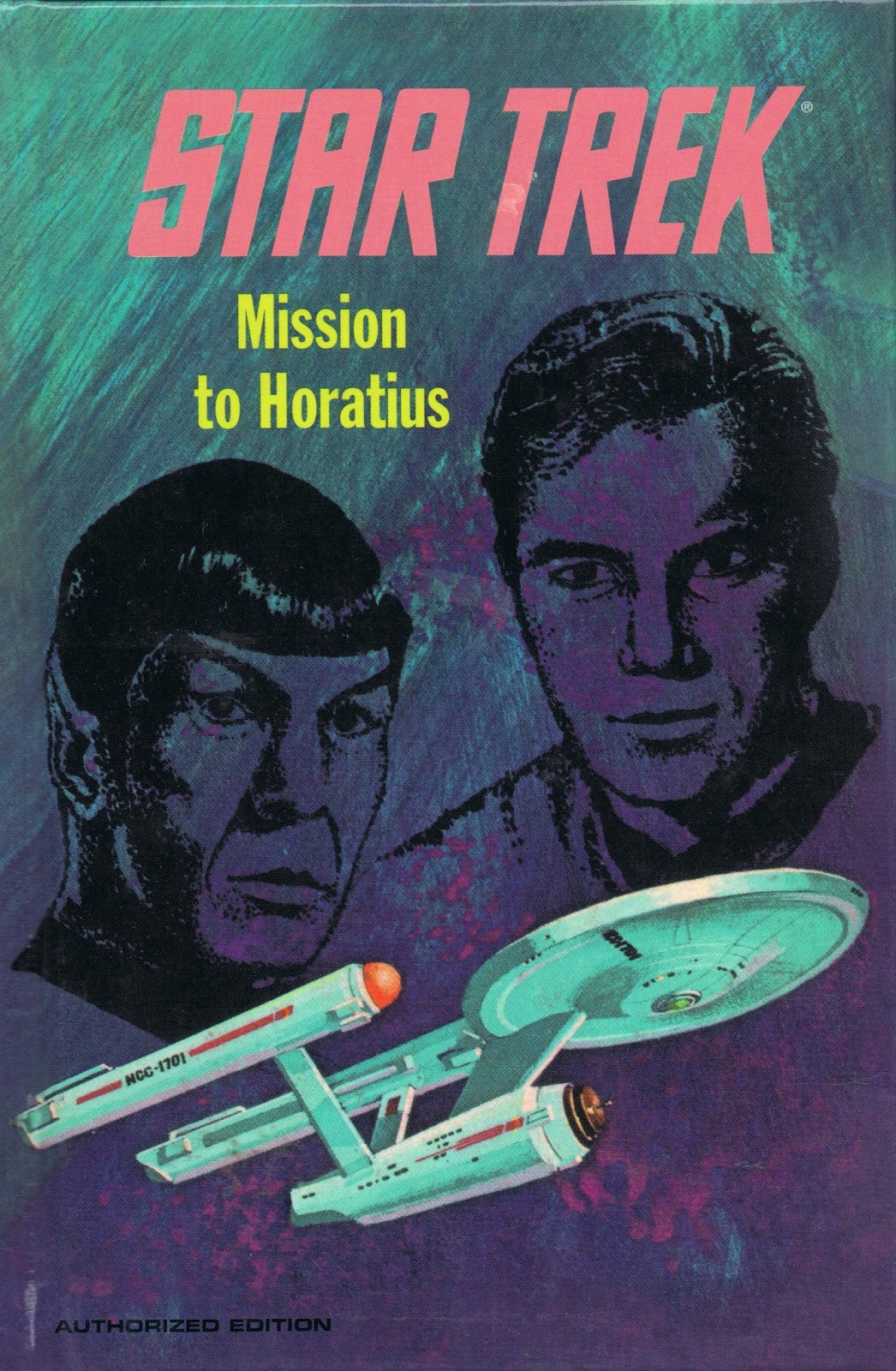
So how does Reynolds' effort rate? First, let's look at the story:
The Enterprise has been out on patrol so long that ship's stores are low and the crew is beginning to suffer from "cafard". This malady is a kind of isolation sickness that can lead to mass insanity. Before the ship can return to starbase, however, it receives a distress call from the Horatius system just beyond the Federation.
There are three Class M planets in the system, all inhabited by pioneers who don't want to be Federated. They are the primitive society of Neolithia, which operates in bands and clans; the theological autocracy of Mythria, controlled by a happy drug called "Anodyne" (a la "Return of the Archons"); and the Prussian military state of Bavarya. This world is the most dangerous, as they have designs on conquering the Federation, and they are building an army of clones ("Dopplegangers") toward that end.
Uncertain as to from which planet the distress signal originated, Kirk leads a landing party composed of his senior officers to each planet in turn. Meanwhile, the strings on Uhura's guitar break one by one, and Sulu's pet rat gets loose. Cafard causes 40 crew members to be put in stasis. It's not a happy trip. But in the end, it's a successful one when Kirk finds the that Anna, the daughter of "Nummer Ein" on Bavarya, summoned the Enterprise to thwart her father's nefarious scheme,
Well. There's quite a lot wrong with this book. Reynolds makes serving on the Enterprise feel like the worst duty in the galaxy. Maybe this is realistic, but from what we've seen, the crew isn't this unhappy. As for "cafard", if our nuclear submarine crews don't suffer from such issues, I can't imagine a crack Starfleet crew would.
Reynolds' characterizations are only cursorily accurate. Indeed, Mission feels more like a lesser story in his Analog-published United Planets series of stories, featuring a decentralized set of worlds with every kind of government imaginable. There's an undertone of smugness as Kirk destroys one society after another—first by beaming down an anodyne-antidote into the Mythran water supply (if Scotty can manufacture ten pounds of the stuff in ten minutes, why can't he synthesize new strings for Uhura?), and then by destroying all five million dopplegangers on Bavarya…who may well have been sentient beings.
And finally, McCoy staves off cafard by making the crew believe that Sulu's rat has Bubonic Plague, and that it must be killed to save the ship. The rat does not have a happy ending.
Most eyeroll inducing passage: "Anna, womanlike, had been inspecting Janice Rand's neat uniform. Now she responded to the bows of the men from the Enterprise. She was perhaps in her mid-twenties, blond, and, save for a slight plumpness, attractive."
(emphasis added)
Even accepting that the target audience is on the younger side (given that the publisher is Whitman), this does not really excuse all the problems with Mission to Horatius. Moreover, the stirring introduction seems to have been written for an entirely different story!

There are pictures by Sparky Moore. They are adequate, but the characters don't look too much like our heroes.
Two stars.

by Mx. Kris Vyas-Myall
In the run up to Christmas, I received a special treat through my letterbox: a second Orbit anthology for 1968. Will it do better than #3?
Orbit 4

Windsong by Kate Wilhelm
Starting with the series’ most regular contributor, Wilhelm’s story concerns Dan Thornton, an overworked executive. He is trying to solve the problem of an armored computer that should be able to act as a policeman. However, it cannot cope with the stress of unexpected situations. To get solutions he has been working with the psychologist Dr. Feldman to see if his dreams yield any ideas but, instead, he keeps dreaming about Paula. She was a free-spirited “windsong” from his teenage years, a person who could instantly analyse patterns to understand the world in ways others could not.
I have been noticing a pattern emerging with Wilhelm’s writing. She wants to experiment with form and content but rarely manages to deliver a strong balance between the two. In this case it is the style that works well, using the dream sessions in a way that would please the New Wave, but the actual plot leaves something to be desired, not really travelling anywhere fast and engaging in some obvious cliches.
Evens out at Three Stars
Probable Cause by Charles L. Harness
Harness recently returned from his parental leave and is back to writing, getting an even warmer reception this time around. Using his legal background, he brings us the discussion of a supreme court case, one where the constitutionality of a conviction depends on an interesting question. If a search warrant is granted based on a psychic reading, does this violate the fourth and\or fifth amendments?
Whilst some of the arguments here do not make much sense to me, I am neither a lawyer nor an American. As such, I am happy to bow to Harness’ knowledge of constitutional jurisprudence. What I question is the length of it all. At over 60 pages, this is the second longest story to yet grace the pages of Orbit. But it is just some justices sitting in a room discussing a piece of legal theory. This might be worth a vignette, but I needed more to justify a novella.
Two Stars
Shattered Like a Glass Goblin by Harlan Ellison
Rudy has finally gotten out of the army on medical, only to find his fiancée Kris in a marijuana-drenched squat in downtown LA. Is he just not “with it” anymore? Or is something more sinister going on?
If this was from an older writer, I would assume it was a crass attempt to be relevant. With Ellison I am willing to assume he is in earnest in writing a hippy horror story. It is not entirely clear if what we see really happened or if it just a massive drug trip, but that actually makes it work better for me.
Four Stars
This Corruptible by Jacob Transue
This is an author of which no information is given, nor one I've heard of before. Is it perhaps a pseudonym?
Thirty-five years ago, scientists Paul and Andrew departed on bad terms. Whilst the former went into seclusion, the latter became vastly wealthy. Andrew now seeks out Paul after learning of his new discovery, the ability to renew a person’s life.
This reads like a middling story from 15 years ago. Whilst some horrifying imagery raises it up, it is pulled back down by lechery.
Two Stars
Animal by Carol Emshwiller
A strange animal is kept in the city by its keepers. What could it be?
This is a stylistic piece that will depend on your tolerance for this kind of prose:
It was said, on the second day, that he did not look too unhappy. A keeper of particular sensitivity brought him both a grilled cheese sandwich and a hamburger so it might be seen what his preferences were, but still he ate nothing.
This reader was unhappy, feeling nothing.
One Star
One at a Time by R. A. Lafferty
In Barnaby’s Barn, McSkee tells tall tales. But what if they are true?
I feel about Lafferty’s writing the way Superman does about Kryptonite. As such, I struggle with him at the best of times. This one I found it impossible to read. I don’t like bar-room frames or tall tales, I was confused by the style and was generally perplexed throughout.
A subjective One Star
Passengers by Robert Silverberg
In an interesting take on the Puppet Masters concept, Earth has encountered strange creatures called passengers. They can “ride” anyone, at any time, with no way to detect or stop them. Once a Passenger leaves a person, the memory goes. Our narrator wakes up to find he slept with a woman whilst he was ridden. However, upon exercising in Central Park he believes he has found her, even though she doesn’t remember him.
Anyone who has read Silverberg of late knows of his strange recurring writings about young women, so I will not belabour the point here. Your rating will probably result from how you balance the concept against this tendency. I come down in the middle.
Three Stars
Grimm's Story by Vernor Vinge
The planet Tu is a world that contains almost no metals. Whilst some technologies, such as pharmaceuticals, hydrofoils and optics, have been able to develop, others, such as heavier than air flight, have not.
It is on this world that Astronomy student Svir Hedrigs is approached by Tatja Grimm, the science editor of Fantasie magazine. She has a dangerous mission for Hedrigs, to stop the destruction of the last complete collection of Fantasie.
In less skilled hands this could easily have been contrived and fannish. Instead, Vinge spins a fascinating intricate plot and fully imagined world, touching on a number of interesting themes with complicated characters. It stumbles a little at the very end, stopping it from gaining a full five stars, but still very good.
A high four stars
A Few Last Words by James Sallis
Hoover is beset by bad dreams. He decides to head to Doug’s coffee shop where we learn from them why the cities are now so empty.
Well written and atmospheric, appealing to this sufferer of parasomnia.
Four Stars
Continuing a steady Orbit
Once again, Orbit contains some of the best and worst of SF for me. This issue more than most, though, is going to be a subjective one. So much is based on style that it cannot help but appeal to personal taste. I know others have considered Animal among the best and Grimm’s Story among the weakest. Whatever your tastes, I think there will be something in here for you to chew on.
The Hole in the Zero by M. K. Joseph

This completely passed me by on first release but an ad for it from the Science Fiction Book Club in last month’s New Worlds was enough to convince me to get it. But was it worth me trialing a membership from them?
The so-called “end of the universe” is an area where physical laws as we know them break down. Sometimes this abstract nothingness recedes, sometimes it expands and swallows galaxies, leaving impossible creations in its wake. The Warden Corps have been set up at its current edge to monitor and explore the strange phenomena.
Among those who come to the current planetoid of the Warden Corps is Helena Kraag. Whilst the daughter of one of the richest men in the galaxy, she has become withdrawn from people since the loss of her mother. At first, she attempts to look straight into the nothingness and loses her sense of identity. In spite of this she still travels with the rest of the crew into this impossibility.
Unfortunately, their Heisenberg shields fail as they enter. As you can probably guess, things start to get strange.
Now, you might expect this to just then be a kind of surreal trip, a la Alice in Wonderland or Phantom Tollbooth. However, what Joseph produces is a kind of fractured character exploration. As we move through these different bizarre situations we learn more about each of the members of the crew and gain understanding of what motivates them.
There are so many delicious details. Initially this looks like it is going to be some kind of 19th Century comedy of manners, but we soon learn this has been carefully set up. Rather it is a kind of conditioning, one to allow the fliers to maintain a solid form of identity. Even when it feels like I am reading the lyrics to I Am The Walrus, there is clear intent and structure behind it.
Joseph is also a master of language and you feel yourself getting knowledge and beauty within the surreality. For example:
Everything and nothing had both happened and not happened; time was as broad as it was long; space was neither here nor there; the loop of eternity threaded itself through the eye of zero.
This kind of sentence could have been gibberish. But the way he phrases it and following the scenarios we have gone through, I absolutely understand what he is getting at.
I could go through all the characters and scenarios to explore the meaning behind it, but I think it is better to take the journey yourself. As Helena says, it is “like falling through the hole in the zero.” It may not be something that is at once fathomable but it is a new experience worth having.
Although primarily known as a poet, he clearly understands science fiction well and has an affinity for it (see, for example, the poem "Mars Ascending"). Here is hoping for more such forays.
Four Stars

by Tonya R. Moore
Moondust by Thomas Burnett Swann

Moondust by Thomas Burnett Swann takes place in and around the ancient city of Jericho. Swann’s Jericho is a poverty-ridden city ruled by the Egyptians, its denizens apprehensive about the steady approach of the Wanderers, a flood of former slaves absconding from Egypt.
Bard ekes out a meager existence in this city with his mother and beautiful younger brother Ram. Ram is stolen one night and replaced by an unbecoming changeling. Bard accepts the fat, ugly Rahab and comes to think of her as a sister until years later when an elusive, feline creature known as a fennec arrives. Rahab then magically transforms into a beautiful woman with wings and disappears one night.
Determined to rescue Rahab, Bard enlists the aid of his friend, Zeb. Together they track Rahab down to the underground city, Honey Heart, where the fennecs rule as gods and Rahab’s kind, the People of the Sea along with beautiful human males–including the long lost Ram– are docile slaves to the fennecs. Bard and Zub must now find a way to wrest Rahab from the insidious control of the fennecs and make it out of Honey Heart alive.
Moondust is a highly imaginative and reasonably interesting story but I did not—could not bring myself to enjoy it. At first, I couldn’t quite put my finger on what bothered me about this novel. Then it finally occurred to me. This book has no soul, no humanity. Moondust feels like a book written from the clinical lens of a white Westerner who thinks he’s better than the people he’s writing about.
Apparently, people living in poverty must always be dirty and have very little regard for personal hygiene. If humans own slaves, those slaves must be black. What else could they possibly be? Beautiful women are nothing but whores. Fat people are ugly, and the Israelites had very big, very ugly feet.
I believe these small details were meant to add color to the story’s world, but obviously originate from a place of thinly veiled disdain.
The main character, Bard, is not one with whom I could sympathize. His little brother is stolen—kidnapped in the dead of night. Even though Bard bemoans the loss, not once does it occur to the self-absorbed nincompoop to go looking for his five-year-old sibling. Instead, he magnanimously accepts the supposedly fat, ugly changeling named Rahab left in his brother’s place as a sister and simply carries on with his life as if that makes any sense.
Years later, when Rahab literally sheds her “ugly” skin and becomes a beautiful creature of a woman, she then becomes a harlot. What else could she possibly become?
When Rahab disappears, summoned back to the underground city of Honey Heart by the fennec, Chackal, Bard immediately enlists the aid of his friend, Zeb and races off in search of his beloved sister. This raises the question of why he was so desperate to save the sibling unrelated by blood–who left voluntarily–but had possessed no inclination to go off in search of his biological brother, Ram.
Once Bard and Zeb descend into Honey Heart, the story loses all coherence for me. The contrived mish-mash of magic, ancient Eastern culture, and biblical myth falls short of a finely woven tale. Moondust merely rankled.
If I’ve learned anything from Swann it’s that you can learn the history and possess infinite academic knowledge of a culture but your words aren’t going to touch anyone if you can’t actually feel the soul—the humanity of the people.
Three Stars

by Jason Sacks
One Before Bedtime by Richard Linkroum
What an odd novel. One Before Bedtime is part mad scientist novel, part social satire, part speculative fiction, and part self-centered character rationalization.
I'm not sure this is a good book, per se, but is certainly odd.
See, in a way, this book is all about the social satire. It's about Jeff Baxter, a kid just home from Vietnam, where he's seen some stuff, man, and who has gone back to work at his a pharmacy in his small midwestern town. Jeff just has one minor problem: his skin is in rough shape and he needs for it to clear up so his girlfriend can be happy. Thankfully (perhaps), the pharmacist turns out to be a tinkerer. Cortland Pedigrew has his own set of chemicals and other tools in the basement of the pharmacy. Pedigrew invents a pill which can clear Jeff's skin.
There's just one problem. The pill somehow turns Jeff's skin from White to Black.
And there the troubles begin.

Because Jeff's girlfriend, Peggy, is a bit of a militant and freedom fighter. She walks around everywhere barefoot and speaks at rallies for Black rights and sings folk songs and reminds one of someone like Joan Baez in her steadfast commitment to the hottest social issues of the day. (She probably wouldn't have cared about Jeff's skin, either, but the poor guy was too self-deluded to notice.)
As the story goes on, Jeff, Peggy and several other characters find themselves mixed up in campus protests, urban riots, and unreasonable hatred. Along the way they're forced to see their own prejudices – often reflexive and instinctive – and, well, pretty much stay the same people they were before the events in this book start.
On top of all the oddball problems I've just described, this 168-page quickie is written from different perspectives. We get no fewer than four different approaches to this character's story, each exceeding the previous one in its banality and strange affect. I kept wondering, over and over, how dumb these characters are, how stuck in their idiotic ways they are so they can't actually see the world differently than they did before their loved one was turned black?
Of course, that's also all part of author Linkroum's goal here, I'm sure. It's clear from his approach that he's interested in exploring the idea that racism is arbitrary and simple-minded, that mere skin color is not a diffentiator of the worth of a person, and that our present great national troubles are as absurd as his chracters all act here.
If only Mr. Linkroum had been more satirical, more biting in his humor. Instead the plot of One Before Bedtime all feels a bit undercooked, a bit bland and a bit too on-the-nose for it to really work for me.
I tried looking up Richard Linkroum in my collection of science fiction mags and found no other examples of his work. This is despite the fact that the book was published in hardcover by J.P. Lippincott, a reputable publisher. Finally I was tipped that there's a TV producer who goes by Dick Linkroum who might be our author here. That makes sense because One Before Bedtime reads like a bad episode of the old Twilight Zone: a bit undercooked and way too preachy.
2 stars.




![[November 10, 1968] Ratings (December 1968 <i>Fantastic</i>)](https://galacticjourney.org/wp-content/uploads/2023/10/COVERREDUCED-672x372.jpg)


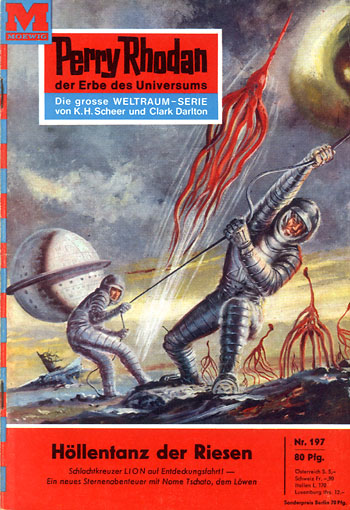












![[November 6, 1968] Who's the one? (December 1968 <i>Galaxy</i>)](https://galacticjourney.org/wp-content/uploads/2023/11/681106cover-471x372.jpg)


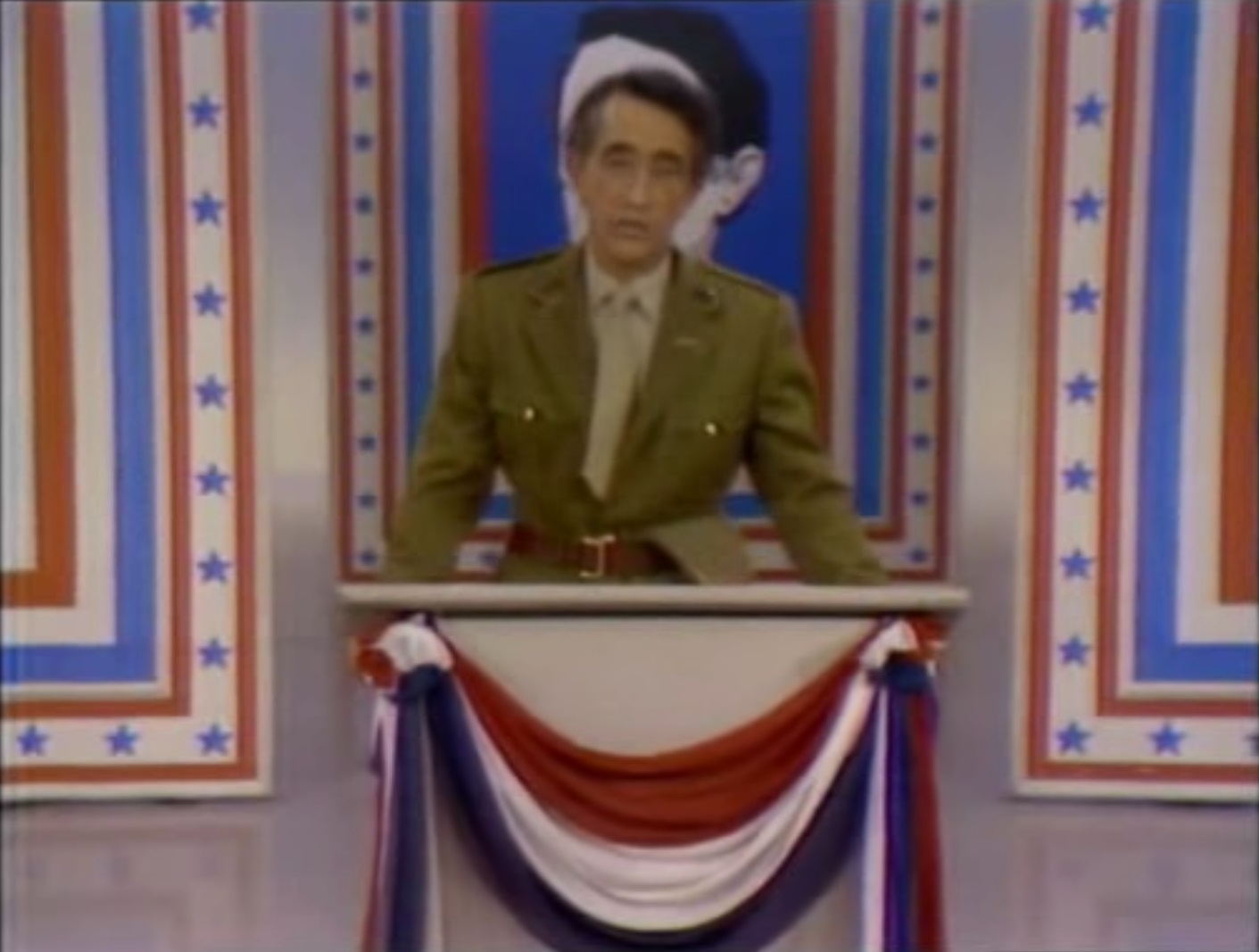

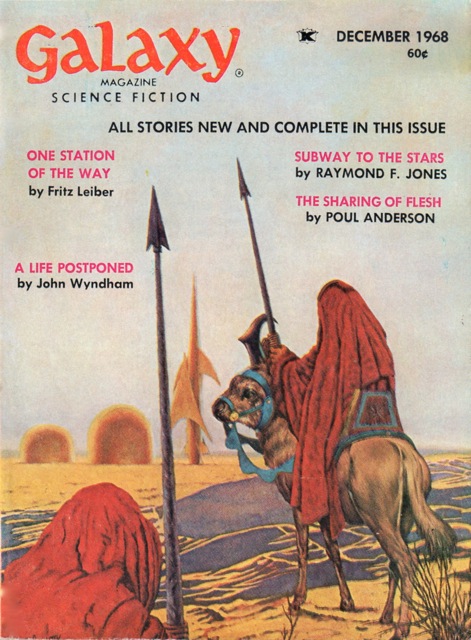

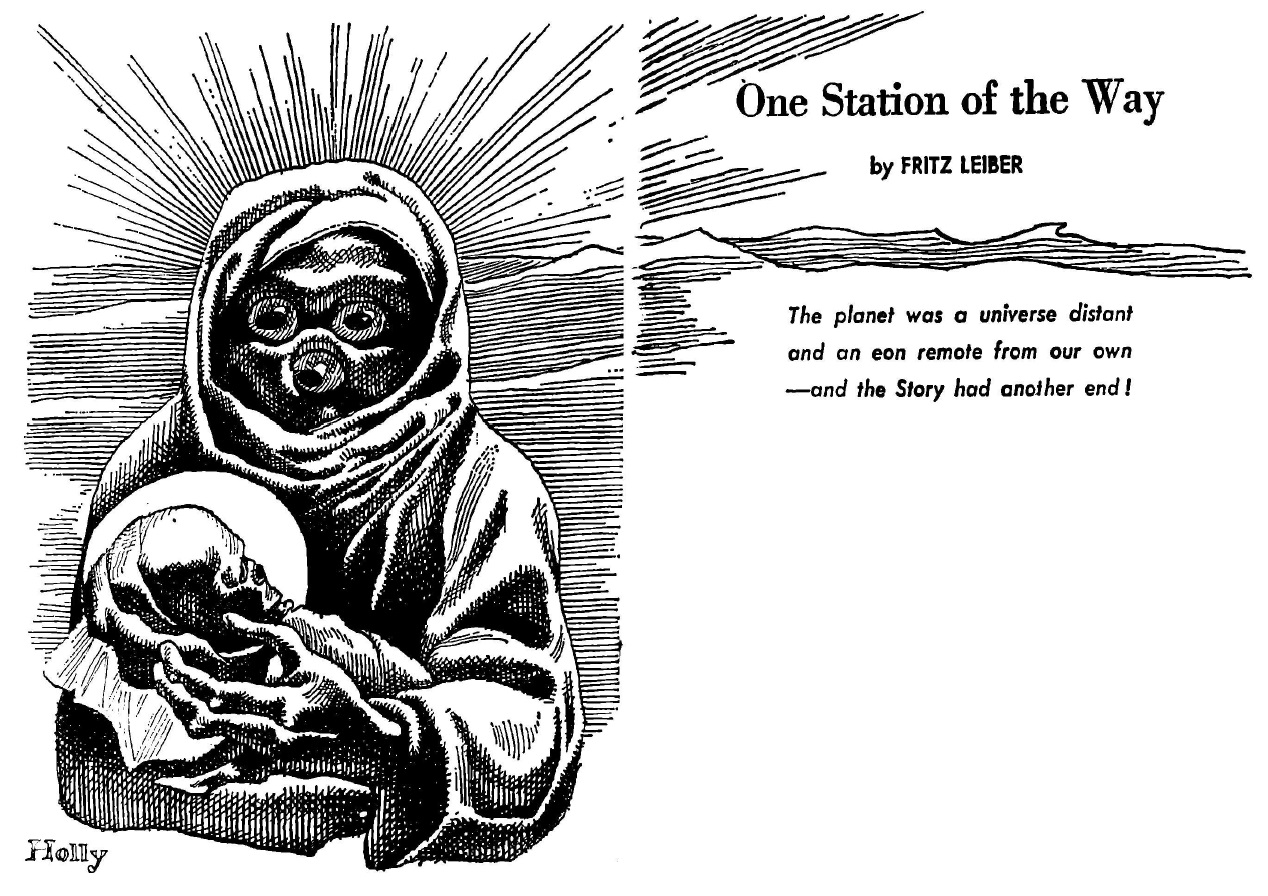
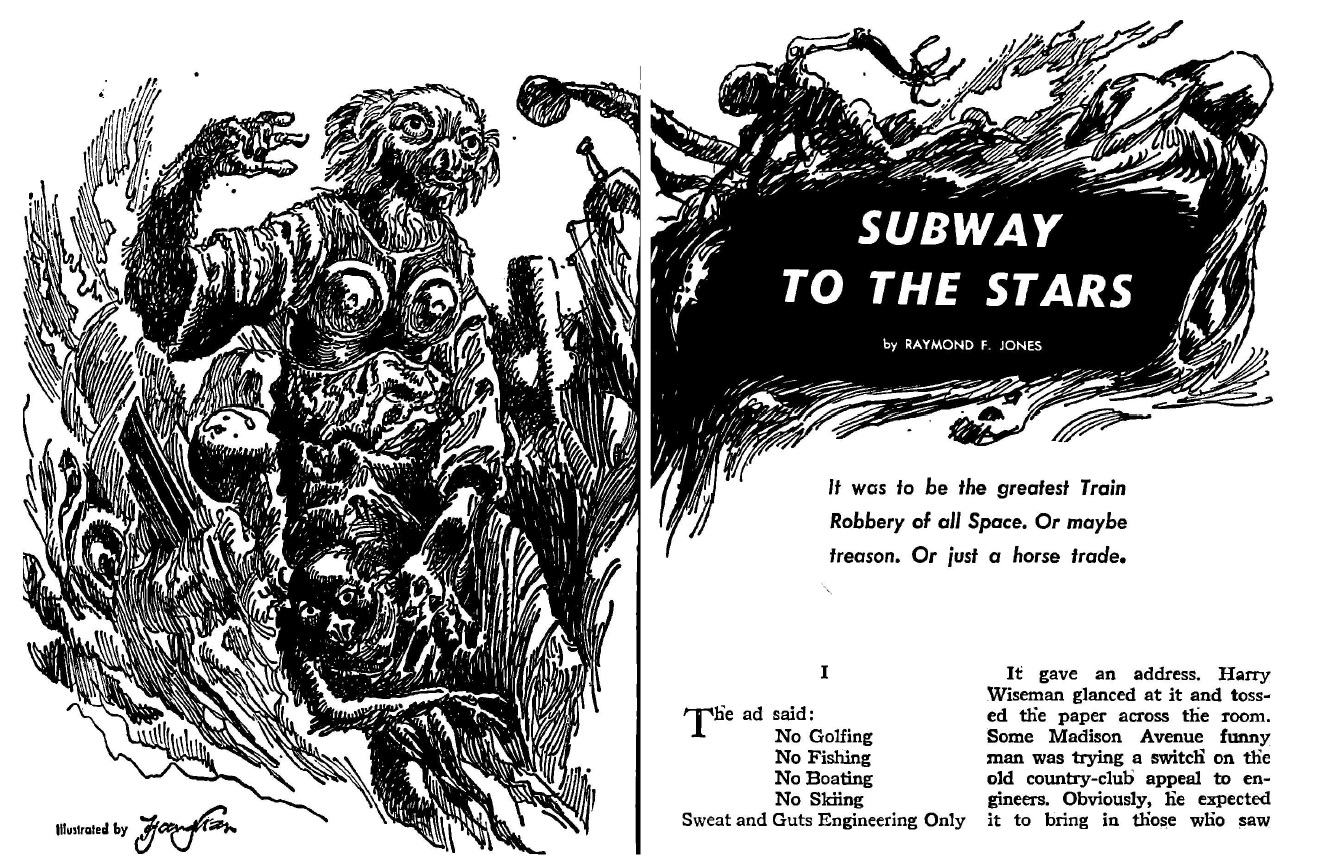

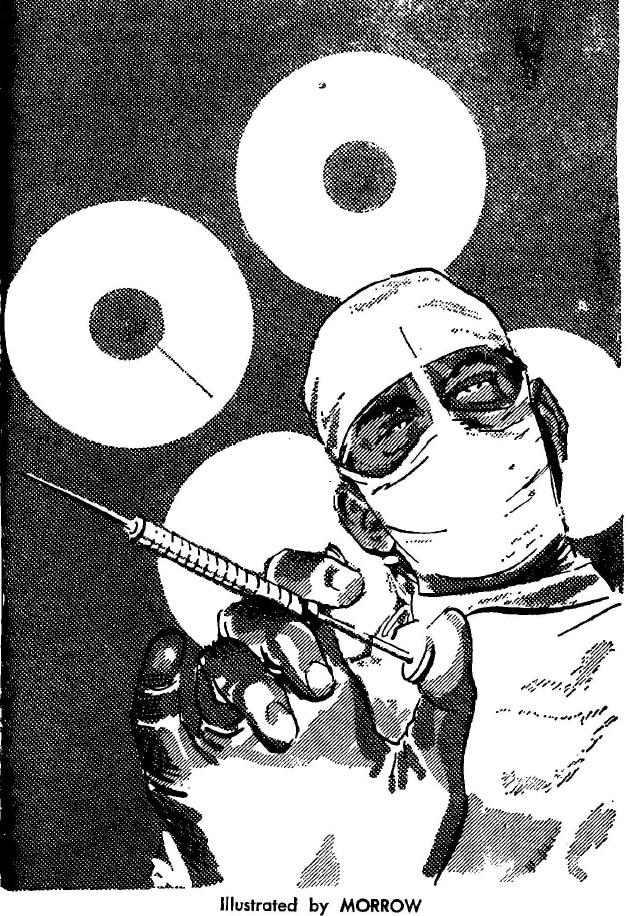
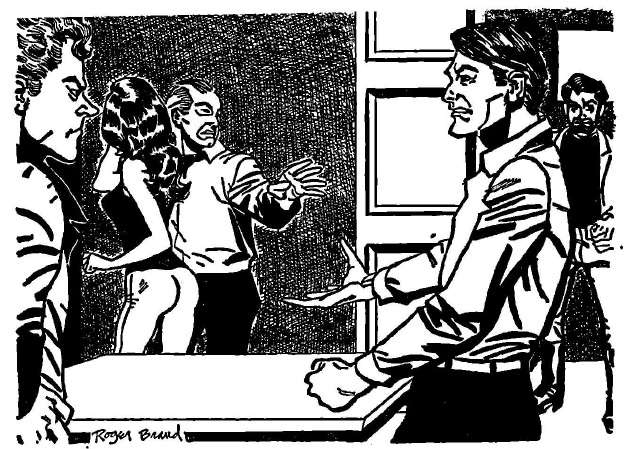
![[November 2, 1968] Role Models (December 1968 <i>IF</i>)](https://galacticjourney.org/wp-content/uploads/2023/10/IF-1968-12-Cover-672x372.jpg)

 Otto Hahn and Lise Meitner circa 1912.
Otto Hahn and Lise Meitner circa 1912. Lise Meitner in 1963.
Lise Meitner in 1963. A previously unknown piece by the late Hannes Bok, probably the last new Bok cover ever.
A previously unknown piece by the late Hannes Bok, probably the last new Bok cover ever.![[October 28, 1968] Impressive at first glance… (November 1968 <i>Analog</i>)](https://galacticjourney.org/wp-content/uploads/2023/10/681028cover-672x372.jpg)
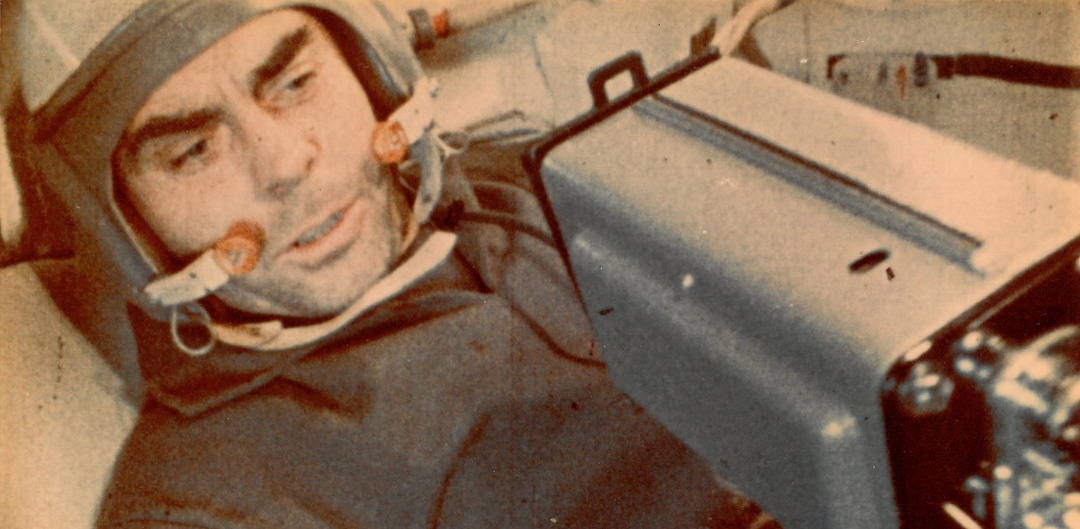

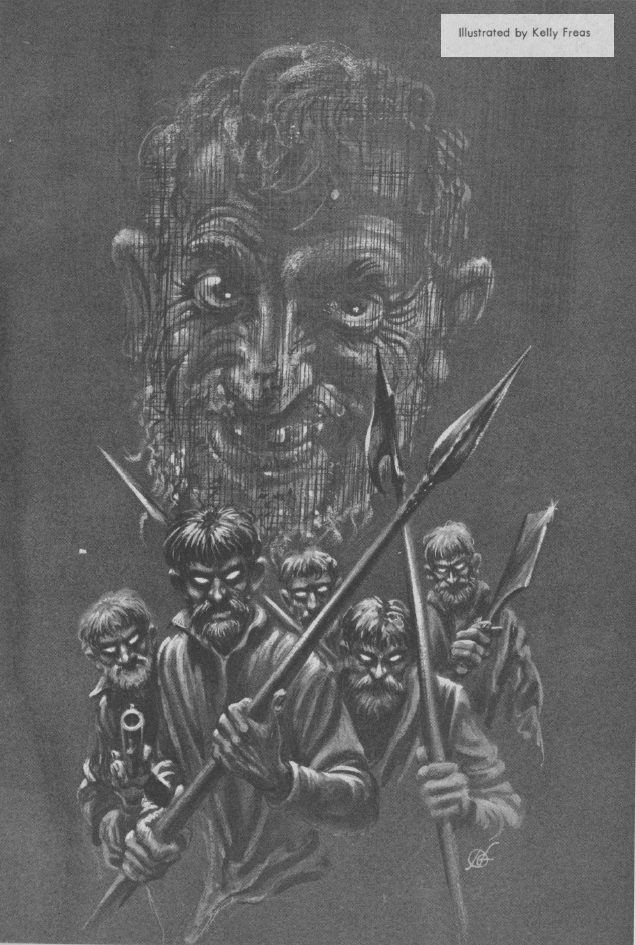
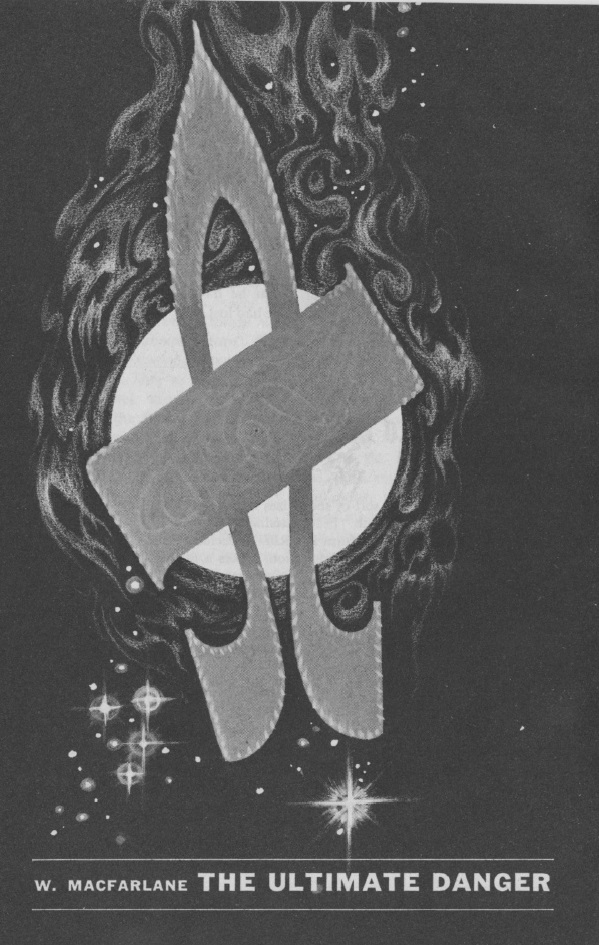

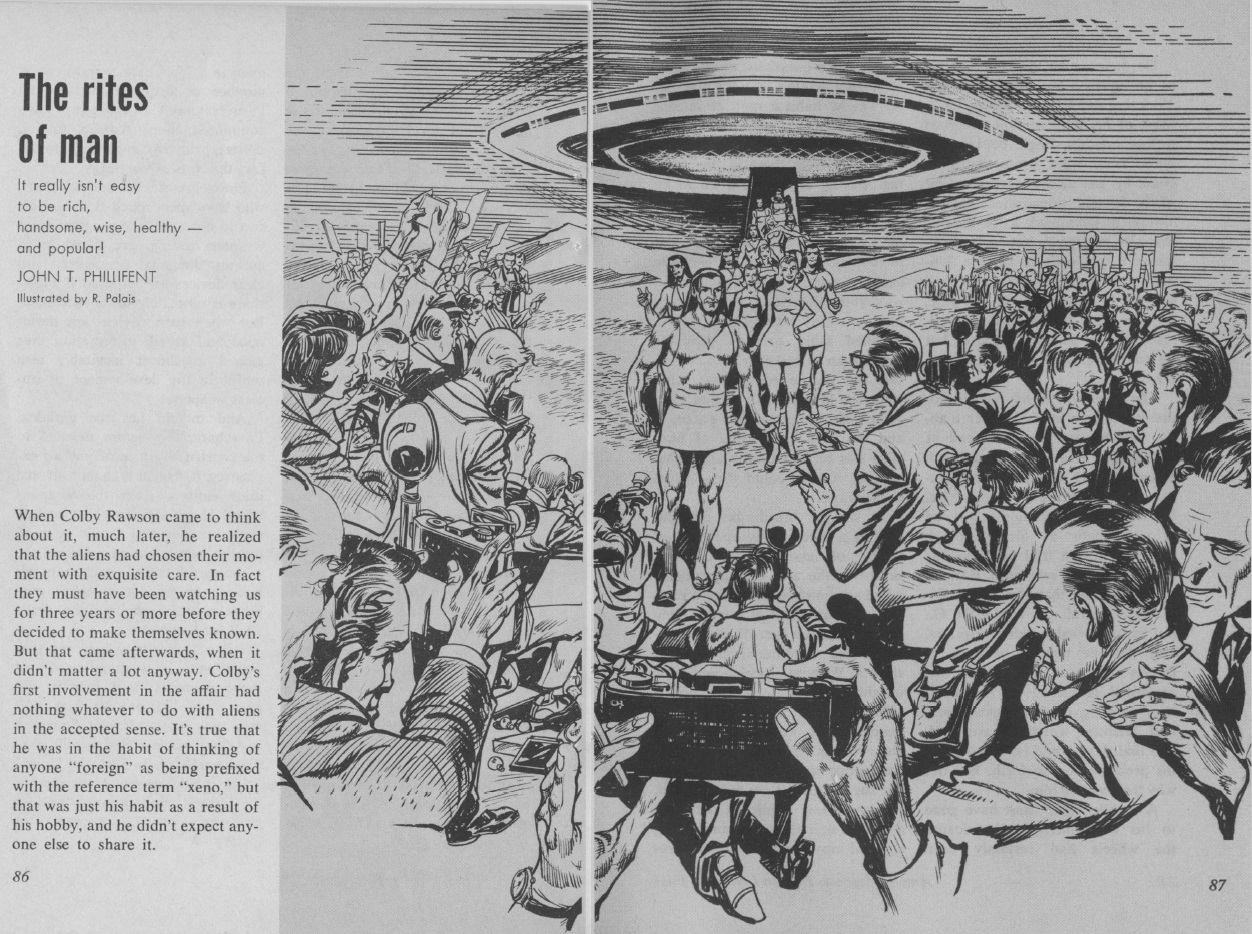

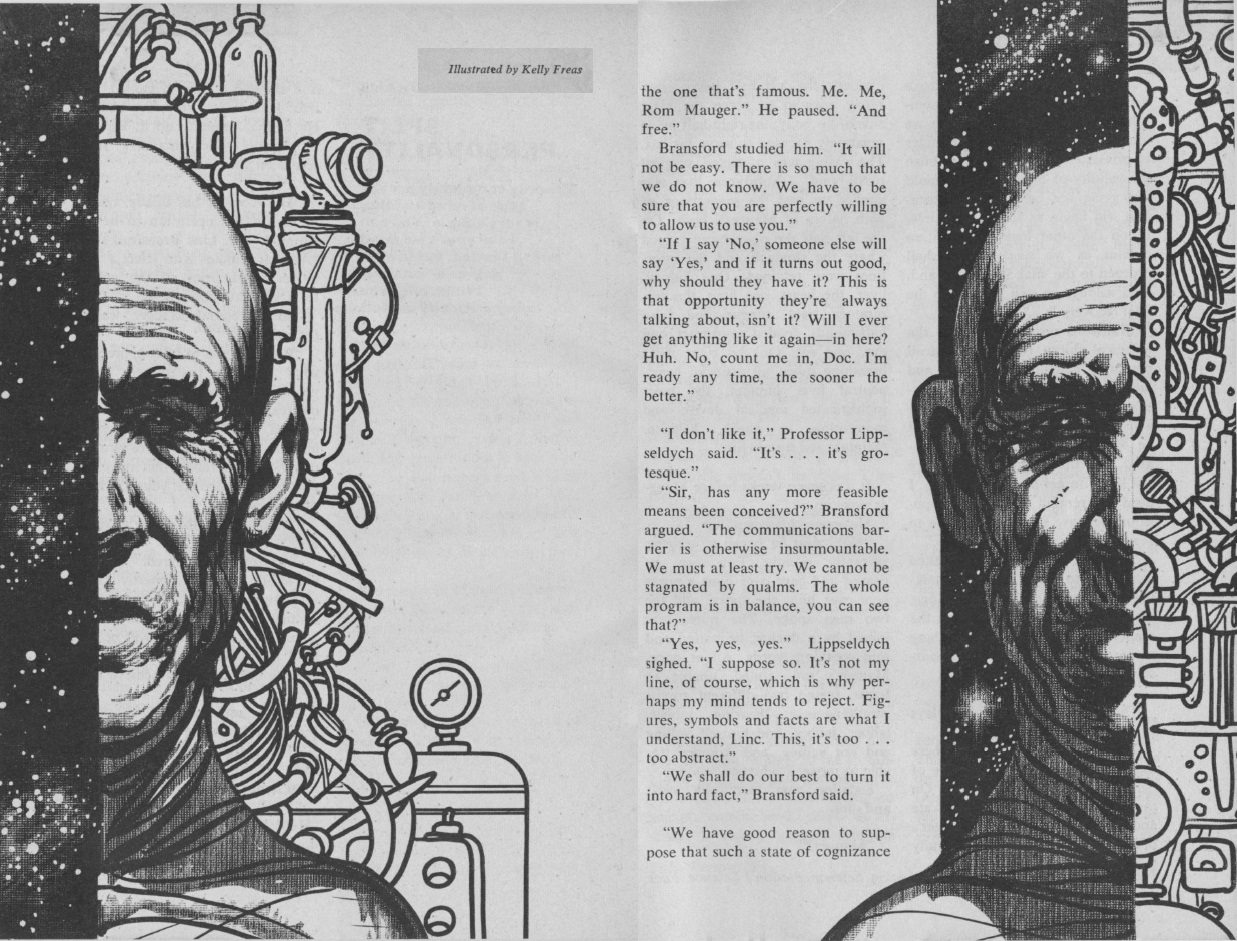

![[October 22, 1968] Hello Again! <i>New Worlds</i>, October & November 1968](https://galacticjourney.org/wp-content/uploads/2023/10/NW-October-November1968-672x372.jpg)

 Cover by Malcolm Dean
Cover by Malcolm Dean Disturbance of the Peace by Harvey Jacobs
Disturbance of the Peace by Harvey Jacobs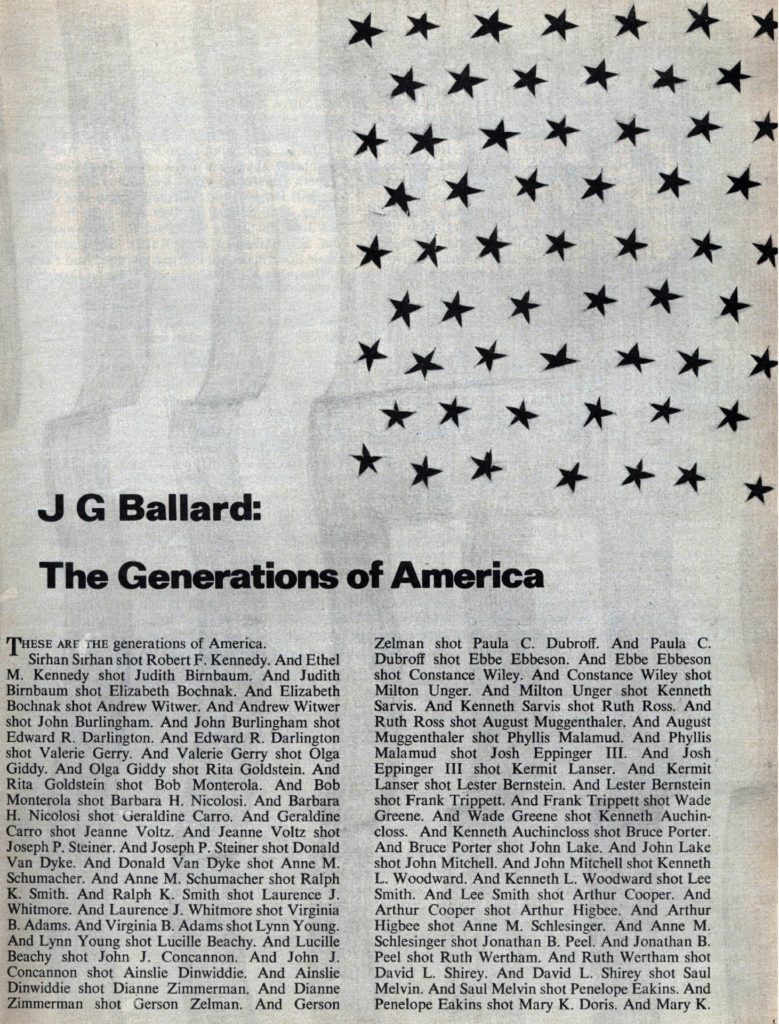
 Article: Into the Media Web by Michael Moorcock
Article: Into the Media Web by Michael Moorcock by Malcolm Dean
by Malcolm Dean Biographical Note on Ludwig van Beethoven II by Langdon Jones
Biographical Note on Ludwig van Beethoven II by Langdon Jones And again, something that’s been missing from recent issues, those pictures of strange artwork. This new version has buildings with patterns of light and shadow – and of course, a naked lady. No explanation – I guess we are just meant to be inspired – or aroused. 2 out of 5.
And again, something that’s been missing from recent issues, those pictures of strange artwork. This new version has buildings with patterns of light and shadow – and of course, a naked lady. No explanation – I guess we are just meant to be inspired – or aroused. 2 out of 5. Ah, poetry. 3 out of 5.
Ah, poetry. 3 out of 5.
 Cover by Gabi Nasemann
Cover by Gabi Nasemann Area Complex by Brian Vickers
Area Complex by Brian Vickers Pauper’s Plot by Robert Holdstock
Pauper’s Plot by Robert Holdstock
 Black is the Colour by Barry Bowes
Black is the Colour by Barry Bowes How May I Serve You? by Stephen Dobyns
How May I Serve You? by Stephen Dobyns Crim by Graham Charnock
Crim by Graham Charnock Article: Graphics for Nova Express by Richard Wittern
Article: Graphics for Nova Express by Richard Wittern Sub-Synchronization by Chris Lockesley
Sub-Synchronization by Chris Lockesley Baa Baa Blocksheep by M. John Harrison
Baa Baa Blocksheep by M. John Harrison Book Reviews: The Impotence of being Stagg by R. G. Meadley and M. John Harrison
Book Reviews: The Impotence of being Stagg by R. G. Meadley and M. John Harrison 
![[October 20, 1968] Giants among Men (November 1968 <i>Fantasy and Science Fiction</i>)](https://galacticjourney.org/wp-content/uploads/2023/10/681020cover-672x372.jpg)


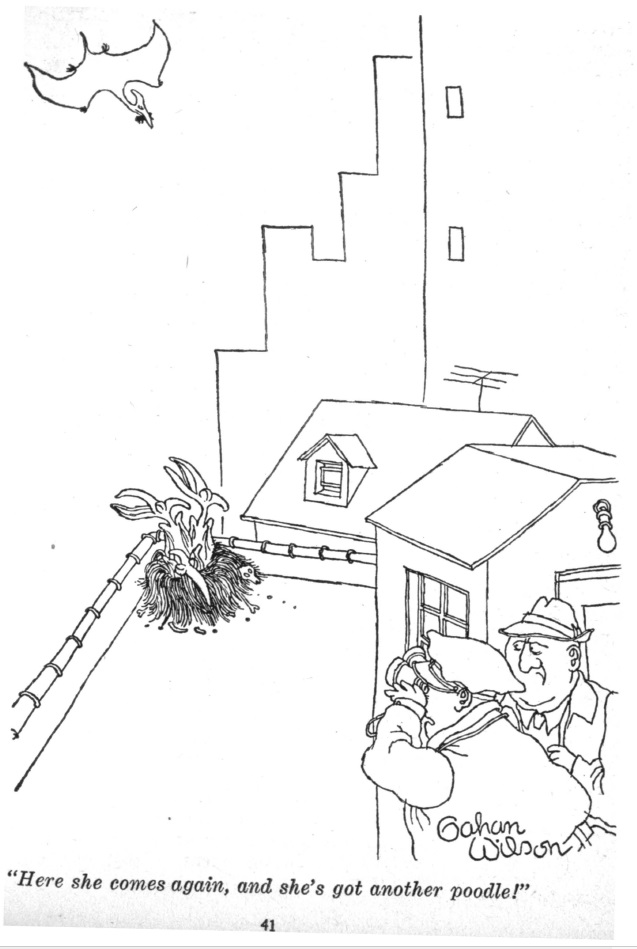
![[October 12, 1968] (October 1968 Galactoscope)](https://galacticjourney.org/wp-content/uploads/2023/10/681012covers-672x372.jpg)
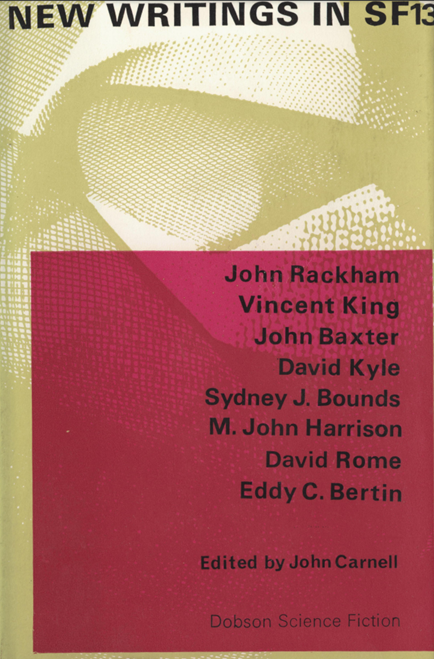






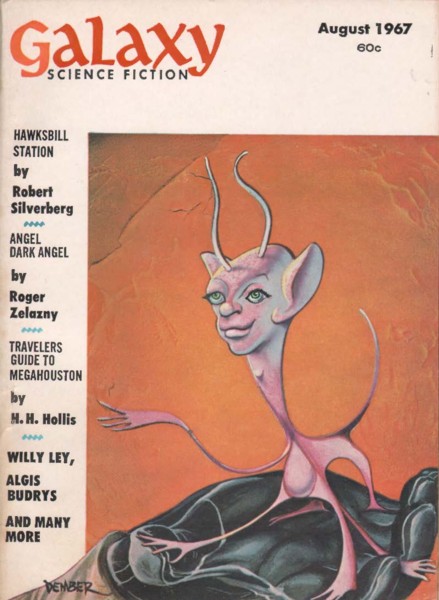





![[October 8, 1968] Probing the future (November 1968 <i>Galaxy</i>)](https://galacticjourney.org/wp-content/uploads/2023/10/681008cover-672x372.jpg)

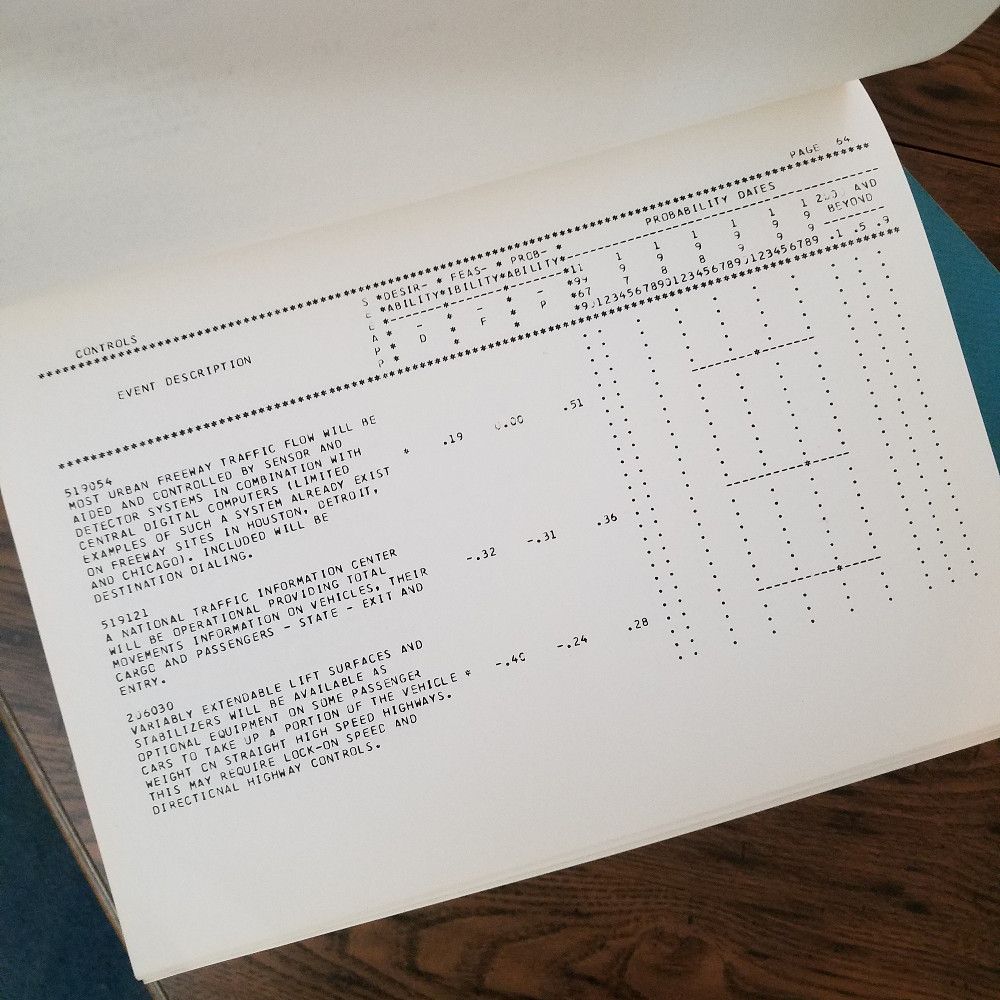
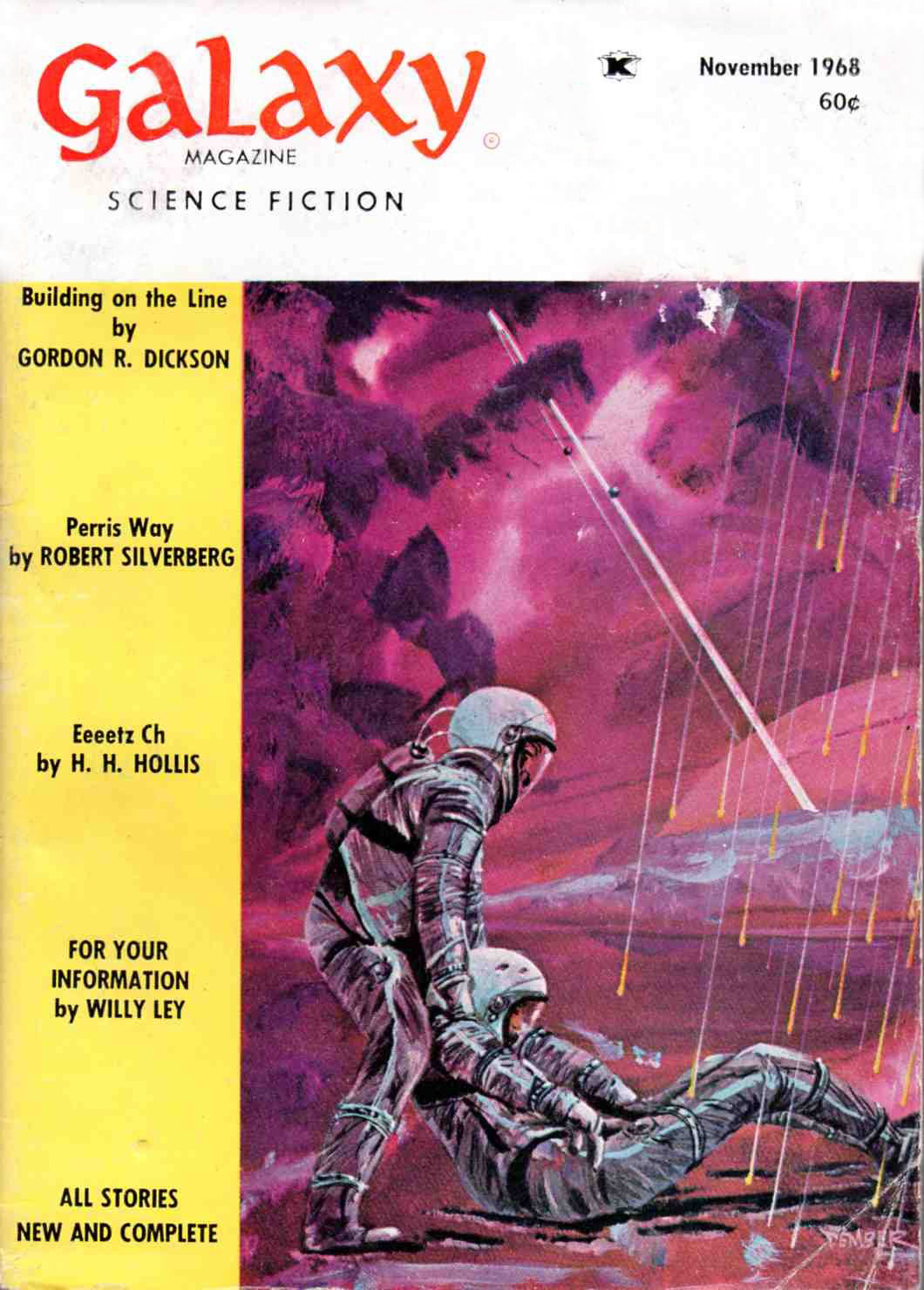

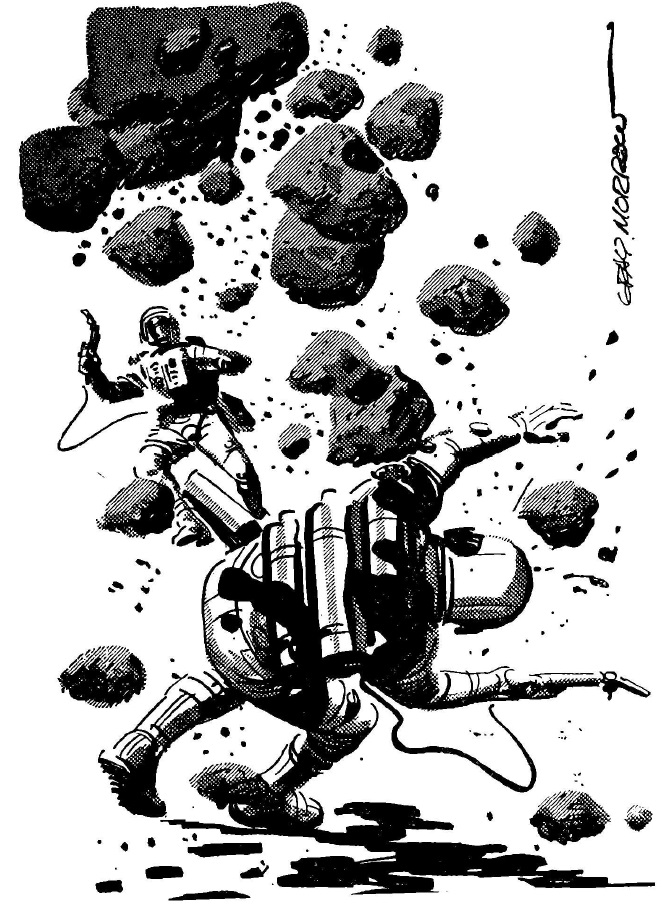
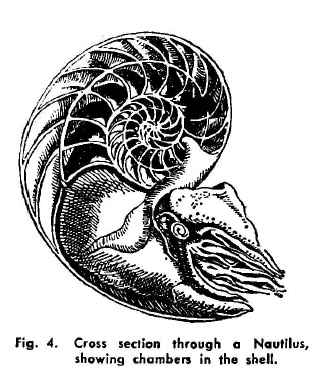
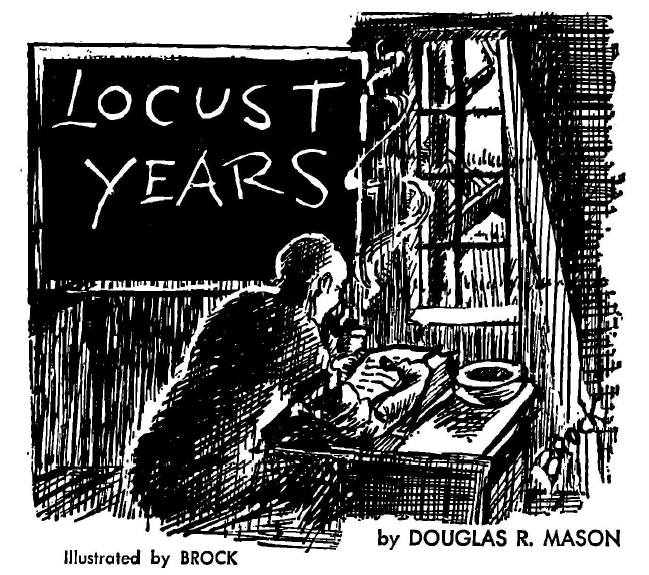
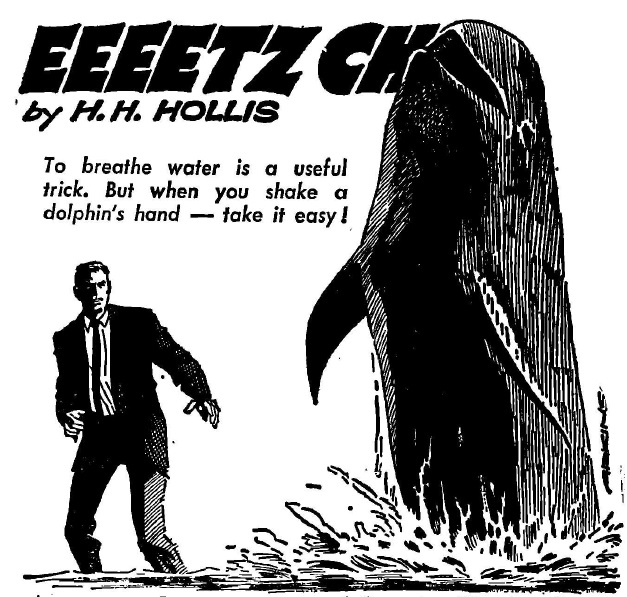

![[October 6, 1968] Snail on the Slope? (November 1968 <i>Amazing</i>)](https://galacticjourney.org/wp-content/uploads/2023/10/amz-1168-cover.png)



